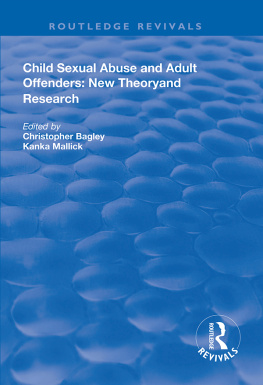CHAPTER XVIII. HEALTH AND SANITATION,
MEDICINE AND SURGERY
Medicine and surgery were first practiced in Seattle and vicinity by Dr. D. S. Maynard, and among his early activities was the establishment of a hospital. Also, he included drugs and medicines among the miscellaneous stock in his little pioneer store. While the little community had only occasional need for a medical practitioner a hospital was necessary for the proper care of frequent injuries suffered in the logging camps and sawmills and on board ships, with a skilled surgeon and capable nurse in charge. The doctor and his wife were both these.
The hospital stood on the east side of First Avenue South, between Main and Jackson.
Dr. Josiah Settle came here from Oregon in 1860, and here spent the rest of his life. He was more nurse than doctor and gained very little practice.
Dr. W. H. Robinson located here in 1866, and Doctor Canavan soon afterward, and often these surgeons united in work at the hospital.
Dr. Charles F. Barnard, surgeon dentist, opened an office at Kellogg's drug store in May, 1866. Two years later Dr. J. F. Grady and Dr. J. J. Birge, surgeon dentists, located here. The latter did not remain long. By 1868 Dr. G. P. Bissell, accoucheur, and Doctor Wheeler were engaged in the practice of medicine here.
Dr. S. G. Calhoun settled in Seattle in 1868, but after a time moved to Whatcom, returning permanently in 1872. He was a skillful physician and surgeon and a gentleman of fine manners and pleasing address. He won the universal esteem for his public spirit and upright citizenship. His widow and son, Fred, and daughter, Mary, are yet residents of Seattle.
In 1870 Doctor Rust became associated with Doctor Maynard in the management of the hospital, and generally in handling the cases that came to that institution. The next year, Dr. J. W. Marcus, surgical and mechanical dentist, established an office over Woodward and Brunn's drug store. Dr. Stacy Hemenway came in 1871 and secured offices in the Yesler Building. D. F. Arnold, druggist, was also a doctor.
In November, 1870, Dr. Gideon A. Weed and wife arrived here and he at once opened an office. In the later '50s he and Mrs. Weed had been practitioners of hydropathy in Salem, Ore. Later he went to California and took a full course in medicine and on his arrival in Seattle he entered upon a long and successful medical practice. Also, he took a prominent place among the business men and municipal activities of the little city. In 1876 the doctor was elected mayor and again elected the following year, an honor conferred only a few times in the history of the city. During this second term he also was the acting health officer, the first to serve in that capacity. In a few years, from successful practice and fortunate investments in Seattle real estate, he acquired a considerable fortune. In the early 80s Doctor Weed's beautiful residence occupied the northeast corner of Second Avenue and Madison Street. For that period it was a pretentious structure. Later it was acquired by John Leary and for many years was his home. The Ferry-Leary Building now occupies its site.
Early in 1872 D. S. Maynard and J. S. Church formed a partnership for the practice of medicine and surgery and opened an office at Maynard's Hospital.
In December, 1872, among the doctors here were D. S. Maynard, R. H. Lansdale, S. G. Calhoun, Josiah Settle, A. Bagley, G. A. Weed, G. M. Phillips and Quan Sing, a Chinese practitioner.
In July, the city council passed a health ordinance which provided that all contagious and infectious diseases should be indicated with colored cards as soon as they should be declared by the attending physician. The ordinance was extended to vessels.
In May Dr. Fred W. Sparling, physician and surgeon, late of the United States army, opened an office near the city hospital.
Dr. Alvin Bagley, a gentleman of advanced years, who had been a well-known medical practitioner in New York, Ohio and Michigan, settled here in 1872, where he died in 1885.
In the summer of 1873 Drs. H. A. Willison and S. F. Chapin came here for permanent residence. The former had served as physician at the Chehalis Reservation and the latter was a graduate of the College of Physicians and Surgeons, New York City, and had practiced for ten years. Dr. R. H. Lansdale, a pioneer in the late '40s, began to practice here about the same time with an office over the Seattle Market. A little later Dr. B. R. Freeland, dentist, opened an office next door to the White Church.
Early in 1874 Dr. G. A. Weed fitted up here a private hospital with every appliance and convenience necessary for proper medical and surgical attendance.
The establishment of the hospital was due to the urgent demand of all the towns of the Sound for medical and surgical aid, particularly in emergency calls, and for comfortable rooms and good care at moderate prices. In February, he received from the county commissioners a contract to take charge of all sick persons who should require medical treatment at the county's expense.
This year Dr. J. S. Maggs located here and commenced the practice of dentistry. Not long afterward he built a home in the dense forest on the western shore of Lake Union, where members of his family still reside.
In March Dr. E. W. Weston resigned the office of physician to the Indians on the Puyallup Reservation and Dr. Stacy Hemenway of Seattle was appointed in his place. In the fall of 1874 C. M. Sawtelle, M. D., and Mrs. M. P. Sawtelle, M. D., physicians and surgeons, came to this city and established an office over the Seattle Drug Store. Mrs. Dr. Sawtelle was the first woman physician to practice in the city, though the wife of Dr. G. A. Weed was a licensed physician.
On October 22nd the Medical Association of Washington Territory assembled in the city. The meeting was called to order by A. H. Steele of Olympia, president of the association. The names of G. A. Weed and W. E. Bryant were presented for membership and were duly received. In the evening Doctor Steele delivered a public address at the pavilion. The following officers were elected for the ensuing year: President, S. F. Chapin; vice president, RufusWillard; secretary, J. W. Waughop; treasurer, A. H. Steele; censors, H. A. Willison, G. A. Weed, Thomas T. Minor and N. Ostrander.
In 1875 Dr. H. B. Bagley arrived. He had lately been professor of principles and practice of surgery in the Michigan Central Medical College. The Bagleys, father and son, made operative surgery and surgical diseases a specialty and attended calls to any point on the Sound. Dr. H. B. Bagley soon became a prominent factor in the professional, business and social affairs of the city. By intelligent and fortunate investments in Seattle real estate he became quite wealthy. At the time of his death he owned the large farm and beautiful country home on Black River, later known as the Country Club.
Dr. Josiah Settle died here in 1876, leaving his estate to his two daughters; his widow and Rev. Daniel Bagley were made executors. His property was valued at about seven thousand dollars.
In 1876 the leading practitioners here were Drs. G. A. Weed, G. V. Calhoun, A. and H. B. Bagley, John Baker, Halcom Hoffman, and Fred W. Sparling; J. C. Grasse, dentist.





